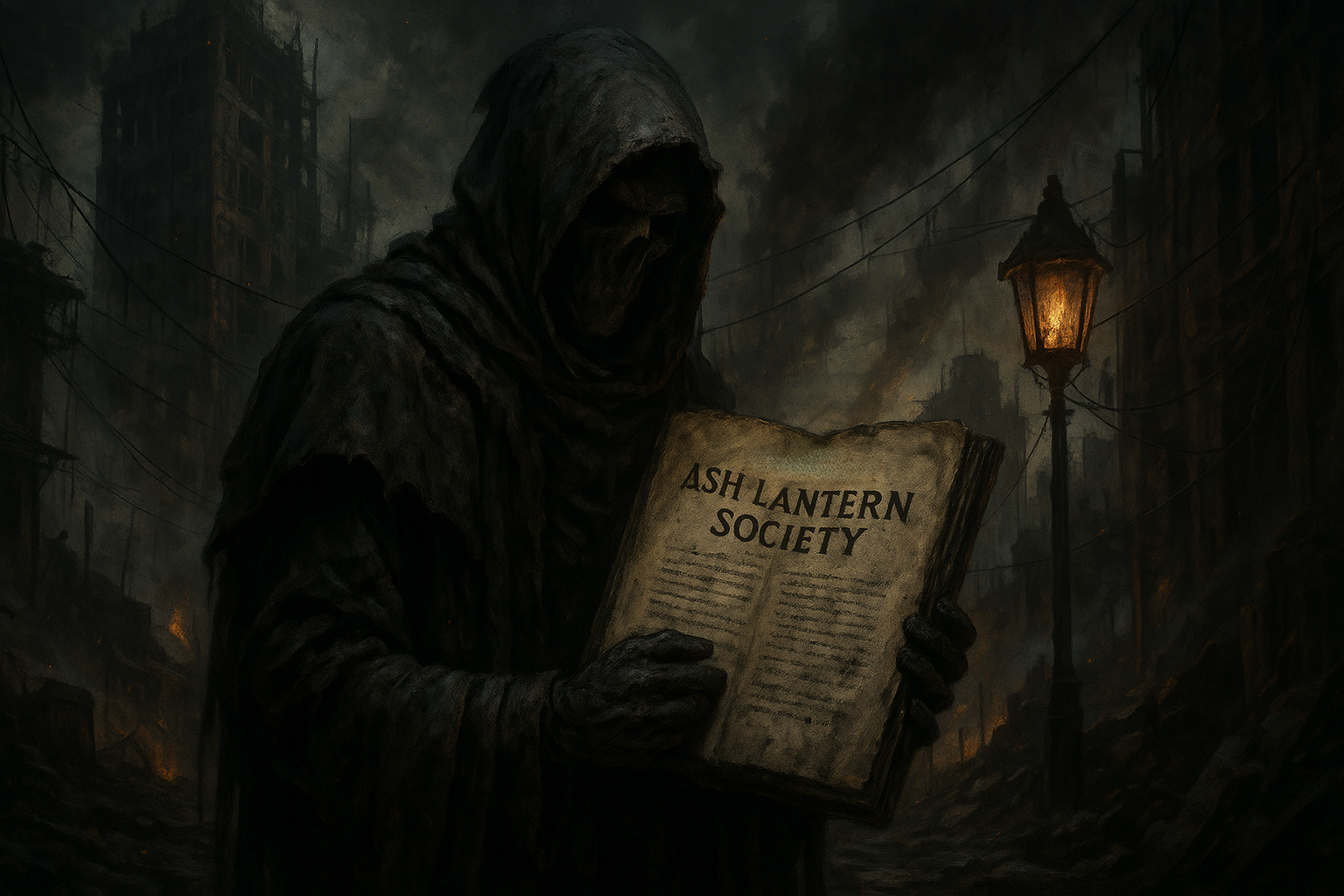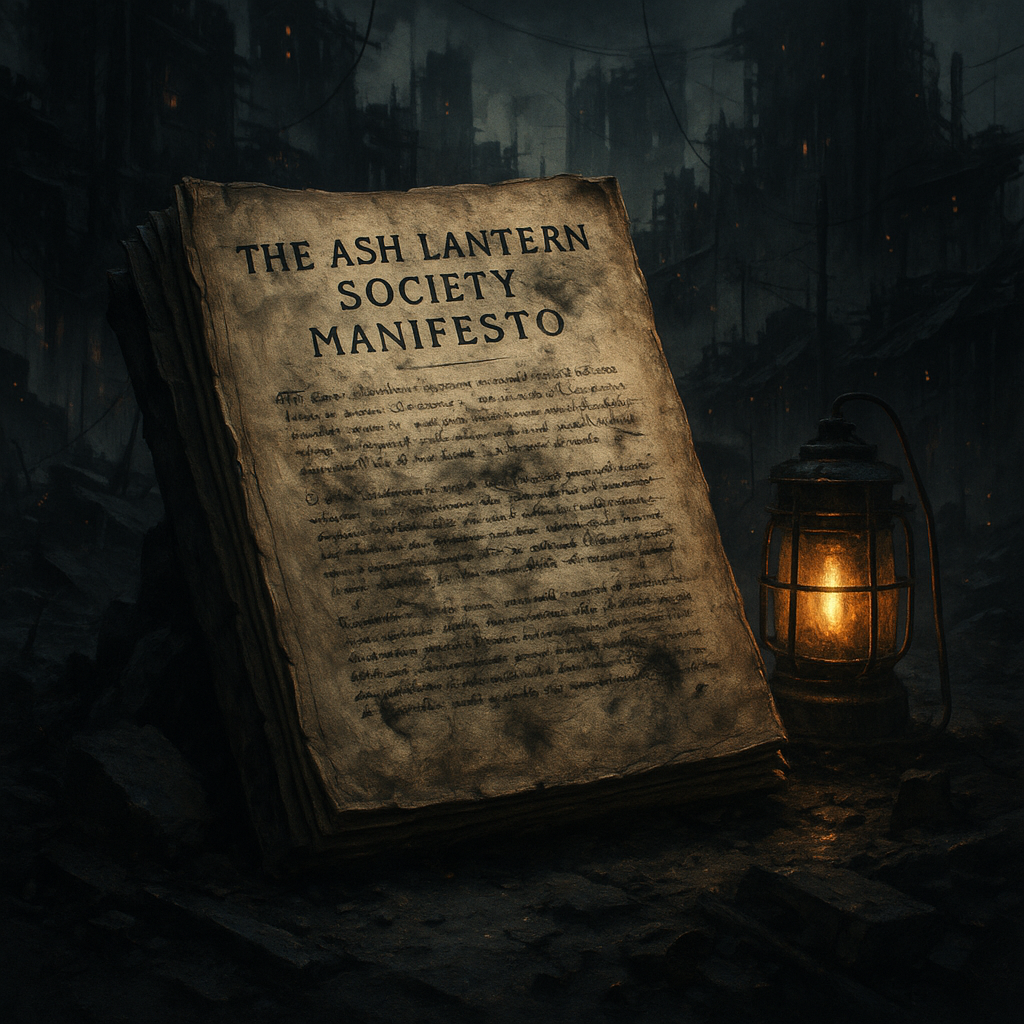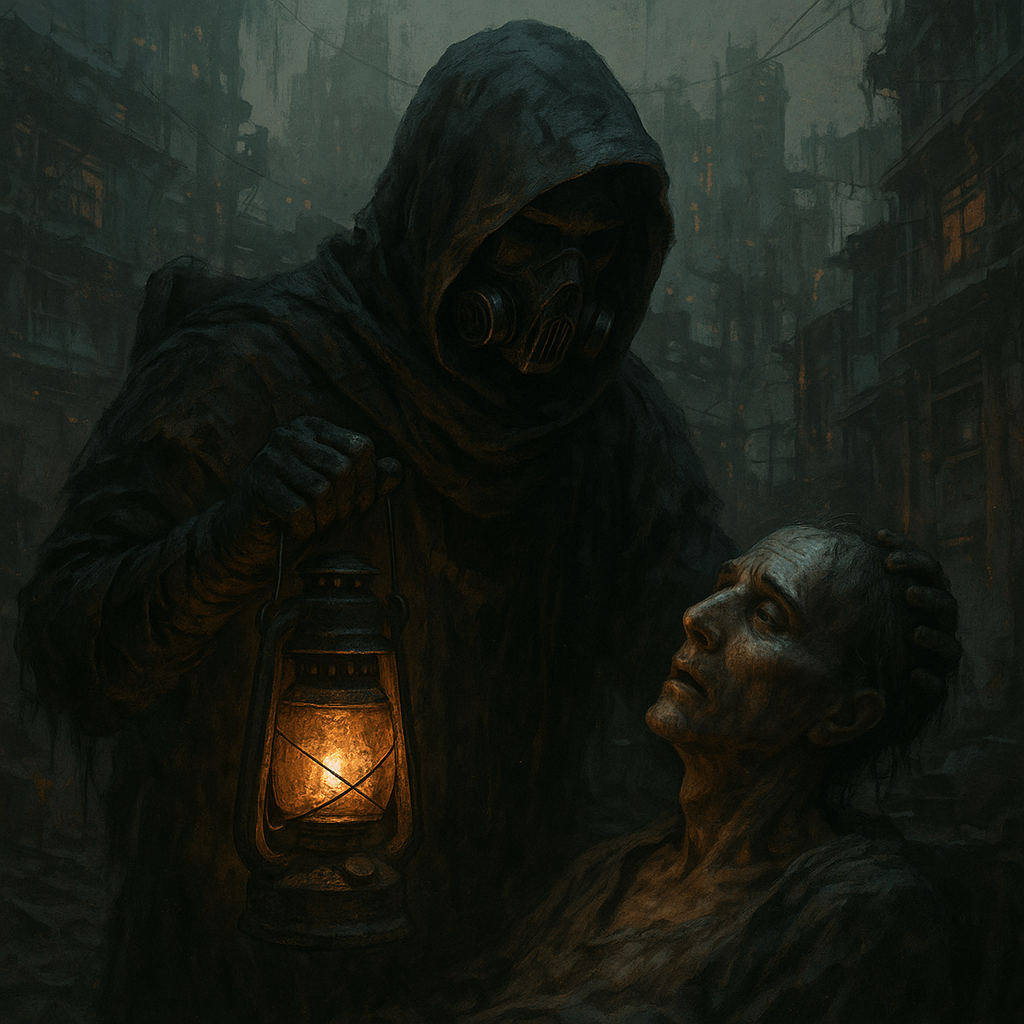The Ash Lantern Society Manifesto
The Ash Lantern Society Manifesto is a hand-bound codex crafted from soot-darkened vellum, its pages fragile yet resolute, marked with smudges of ash and streaks of dried ink. The manifesto is written in a deliberate, measured hand—each word a quiet flame against the oppressive silence of Camp Hope’s shadows. This document serves not only as a declaration of purpose but as a sacred testament carried by the Society’s members, whispered in secret gatherings, and hidden beneath the ruins where light barely reaches.
Purpose
The manifesto was created to articulate the Society’s core beliefs and mission—providing mercy and dignity to the hunted, the suffering, and the dying. It was written to unify Ash Lanterns under a shared code of silent compassion and to clarify their role as guides through the darkness, distinct from the authorities and factions that often bring cruelty or neglect. The document aims to inspire new recruits, affirm the resolve of its members, and establish the Society’s place within the fraught power structures of Camp Hope.
Document Structure
Clauses
The manifesto is divided into thematic sections that include:
- Origins and founding myth
- Philosophy of mercy and silence
- Structure and roles within the Society
- Relationship to other factions (notably the Solstice Syndicate)
- Responsibilities and conduct expected of members
- Warnings regarding the risks and sacrifices inherent in their mission
- A call to those burdened by guilt or loss to seek the Society’s aid
Each clause reinforces the Society’s rejection of glory or domination, emphasizing choice, remembrance, and quiet resistance.
Publication Status
The manifesto is a clandestine document, shared only among trusted Ash Lantern members and sympathizers. It is not publicly accessible and is guarded fiercely. Copies are handwritten or painstakingly transcribed to maintain secrecy and avoid detection.
Legal status
The manifesto holds no official legal status within Camp Hope’s formal jurisdictions. The Ash Lantern Society itself is clandestine and unacknowledged by authorities. Possession or distribution of the manifesto is often considered subversive, especially by the Town Watch and the Church of Hope. Within the Solstice Syndicate’s sphere of influence, it carries informal authority among members.
Historical Details
Background
The manifesto emerged during a period of intensified persecution of Others and Awakened in Camp Hope. It crystallized the collective grief and determination of those who refused to abandon mercy in a brutal city. It marks the Ash Lantern Society’s transformation from a whispered confession to an organized, if hidden, force for quiet resistance.
History
Following its creation, the manifesto guided the Society through internal schisms, expansion of their mission, and tense relations with the Town Watch and Church of Hope. It has been revised minimally, maintaining its original tone of solemn mercy and bearing witness, even as the Society grew in influence and myth.
Legacy
Though hidden from public view, the manifesto set a precedent within Camp Hope’s underground for mercy as a form of rebellion. It inspired similar clandestine groups and provided a moral framework for those who operate in the grey spaces of power and suffering. The Ash Lantern Society’s ethos of remembrance and choice has become a whispered legend, a counterpoint to the city’s often brutal official narratives.
Term
The manifesto has no expiration. It is intended as an eternal covenant, guiding the Society through generations. Its relevance endures as long as Camp Hope remains a city of shadows and suffering.
The manifesto is not a call to arms, but a call to silence—a fragile flame kindled in the ashes of despair, where mercy walks unseen and death is met with quiet dignity. It binds us not with laws or oaths, but with remembrance and choice.
This manifesto is the whisper in the dark—an unyielding promise that even in a world burned to ash, there remains a path lit by compassion, where suffering is honored, and mercy is not weakness but courage.







Comments